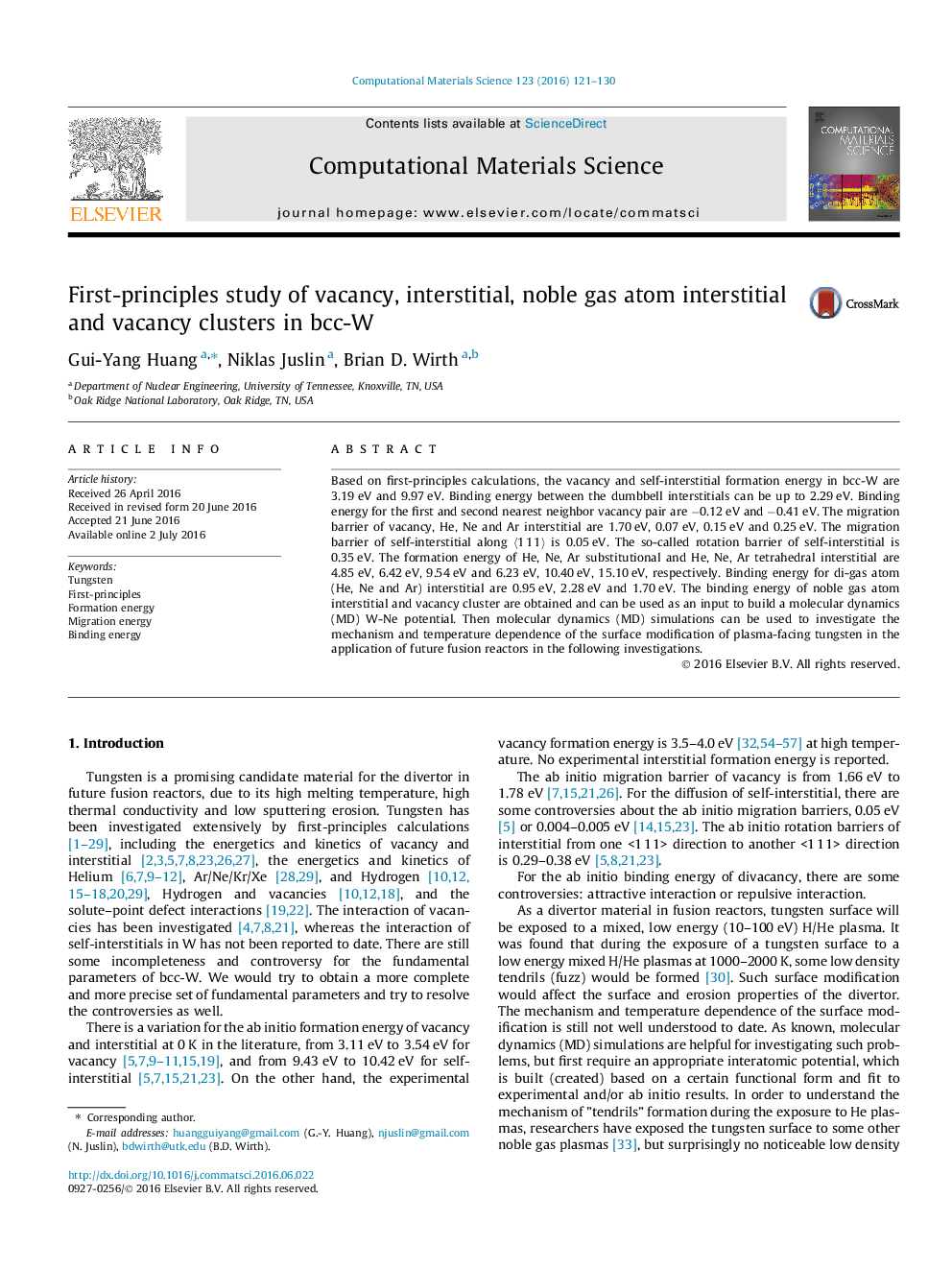| Article ID | Journal | Published Year | Pages | File Type |
|---|---|---|---|---|
| 1559742 | Computational Materials Science | 2016 | 10 Pages |
Abstract
Based on first-principles calculations, the vacancy and self-interstitial formation energy in bcc-W are 3.19Â eV and 9.97Â eV. Binding energy between the dumbbell interstitials can be up to 2.29Â eV. Binding energy for the first and second nearest neighbor vacancy pair are â0.12Â eV and â0.41Â eV. The migration barrier of vacancy, He, Ne and Ar interstitial are 1.70Â eV, 0.07Â eV, 0.15Â eV and 0.25Â eV. The migration barrier of self-interstitial along ã1Â 1Â 1ã is 0.05Â eV. The so-called rotation barrier of self-interstitial is 0.35Â eV. The formation energy of He, Ne, Ar substitutional and He, Ne, Ar tetrahedral interstitial are 4.85Â eV, 6.42Â eV, 9.54Â eV and 6.23Â eV, 10.40Â eV, 15.10Â eV, respectively. Binding energy for di-gas atom (He, Ne and Ar) interstitial are 0.95Â eV, 2.28Â eV and 1.70Â eV. The binding energy of noble gas atom interstitial and vacancy cluster are obtained and can be used as an input to build a molecular dynamics (MD) W-Ne potential. Then molecular dynamics (MD) simulations can be used to investigate the mechanism and temperature dependence of the surface modification of plasma-facing tungsten in the application of future fusion reactors in the following investigations.
Related Topics
Physical Sciences and Engineering
Engineering
Computational Mechanics
Authors
Gui-Yang Huang, Niklas Juslin, Brian D. Wirth,
